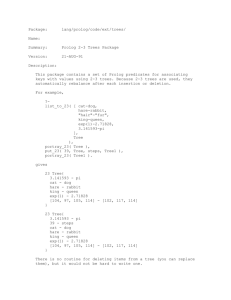

- Visual prolog 5.2 tutorial portable#
- Visual prolog 5.2 tutorial software#
- Visual prolog 5.2 tutorial iso#
C was chosen because it was general-purpose, fast, portable and widely used. Remembering his PhD experience, Stroustrup set out to enhance the C language with Simula-like features. When Stroustrup started working in AT&T Bell Labs, he had the problem of analyzing the UNIX kernel with respect to distributed computing.
Visual prolog 5.2 tutorial software#
Stroustrup found that Simula had features that were very helpful for large software development, but the language was too slow for practical use, while BCPL was fast but too low-level to be suitable for large software development.

The motivation for creating a new language originated from Stroustrup's experience in programming for his PhD thesis. In 1979, Bjarne Stroustrup, a Danish computer scientist, began work on " C with Classes", the predecessor to C++. ījarne Stroustrup, the creator of C++, in his AT&T New Jersey office c. Since 2012, C++ has been on a three-year release schedule with C++23 as the next planned standard. Before the initial standardization in 1998, C++ was developed by Danish computer scientist Bjarne Stroustrup at Bell Labs since 1979 as an extension of the C language he wanted an efficient and flexible language similar to C that also provided high-level features for program organization. The current C++20 standard supersedes these with new features and an enlarged standard library.

The C++ programming language was initially standardized in 1998 as ISO/IEC 14882:1998, which was then amended by the C++03, C++11, C++14, and C++17 standards.
Visual prolog 5.2 tutorial iso#
Ĭ++ is standardized by the International Organization for Standardization (ISO), with the latest standard version ratified and published by ISO in December 2020 as ISO/IEC 14882:2020 (informally known as C++20). e-commerce, web search, or databases), and performance-critical applications (e.g. C++ has also been found useful in many other contexts, with key strengths being software infrastructure and resource-constrained applications, including desktop applications, video games, servers (e.g. Ĭ++ was designed with an orientation toward systems programming and embedded, resource-constrained software and large systems, with performance, efficiency, and flexibility of use as its design highlights. It is almost always implemented as a compiled language, and many vendors provide C++ compilers, including the Free Software Foundation, LLVM, Microsoft, Intel, Oracle, and IBM, so it is available on many platforms. The language has expanded significantly over time, and modern C++ now has object-oriented, generic, and functional features in addition to facilities for low-level memory manipulation. GCC, LLVM Clang, Microsoft Visual C++, Embarcadero C++Builder, Intel C++ Compiler, IBM XL C++, EDGĪda, ALGOL 68, BCPL, C, CLU, ML, Mesa, Modula-2, Simula, Smalltalk Īda 95, C#, C99, Chapel, Clojure, D, Java, JS++, Lua, Nim, Objective-C++, Perl, PHP, Python, Rust, Seed7Ĭ++ ( / ˌ s iː ˌ p l ʌ s ˈ p l ʌ s/) is a general-purpose programming language created by Bjarne Stroustrup as an extension of the C programming language, or "C with Classes".


 0 kommentar(er)
0 kommentar(er)
